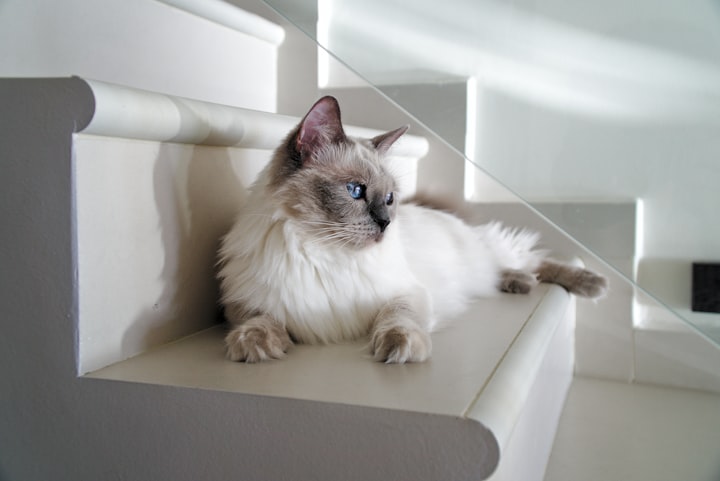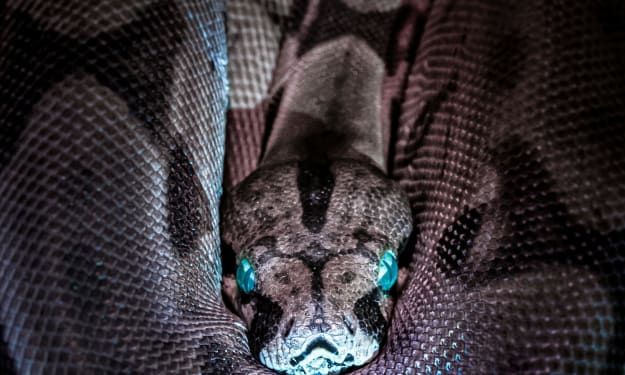Are Scottish Fold Cats Hypoallergenic? The Truth About Allergies and These Adorable Cats Unveiled
Discover the truth about Scottish Fold cats and allergies. Are they hypoallergenic? Learn about their origin, characteristics, hypoallergenic factors, and how to manage allergies. Explore other hypoallergenic cat breeds.
If you are looking for a cat breed that is sweet, friendly, and easy to care for, you may have encountered the Scottish Fold. These cats are recognized for their unique ears that fold forward and down to give them an owl-like appearance. But are Scottish Fold cats hypoallergenic? Can You Adopt When You're Allergic To Cats?
In this blog post, we will explore the origins and characteristics of Scottish Fold cats, explain what hypoallergenic in cats is, debunk some myths about Scottish Folds and allergic reactions, and get on with these cats. Provide some pointers on how to deal with allergic reactions. We also look at some hypoallergenic cat breeds you may need to remember.
Origin and Characteristics of Scottish Fold Cats
The Scottish fold cat breed originated in Scotland in the nineteen sixties when a white barn cat named Susie was spotted with folded ears. She was bred with different cats and produced kittens with the same trait, which resulted from a genetic mutation that affects cartilage throughout the body. A farmer named William Ross registered the breed with the Governing Council of the Cat Fancy (GCCF) in 1966 and began breeding Scottish Fold kittens with the help of geneticist Pat Turner.
Scottish fold cats are medium-sized cats with medium boning and a round head and body. They can have any coat color and pattern, including solid, tabby, tortoiseshell, bicolor, and calico. Depending on the crossbreeding, their hair can be both short and long. The long-haired version is sometimes called the Highland Fold or Scottish Fold Longhair.
The maximum placing function of Scottish Fold cats is their ears, which tilt forward and down due to a dominant gene. Not all kittens in a litter may have folded ears; Some may even have erect ears like their ancestors. The diploma of folding can also vary from single to double or triple. The ears should be handled lightly, as some Scottish Folds may additionally develop stiffness or arthritis in their tails and limbs due to cartilage mutation.
Scottish Fold cats are known for their sweet, charming, and playful personalities. They are affectionate and loyal to their owners and get along well with other pets and children. They are clever and curious but not overly energetic or annoying. They love being around people and often see them around the house. They also have a habit of sitting or lying in unusual positions, including lying on their lower back or with their legs outstretched.
Understanding Hypoallergenic in Cats
Many people believe that a hypoallergenic method is that something does not cause hypersensitive reactions. However, this is only sometimes true. Hypoallergenic means something is less likely to cause an allergic reaction than other things of the same type. For example, hypoallergenic cats are less likely to cause allergies than other cats, but they are no longer completely allergy free.
So what causes allergies in cats? The most common allergens are proteins found in cat saliva, urine, and dander (dead skin cells). When cats groom themselves, they spread saliva on their fur, which dries and comes out as dander. These particles can become airborne and enter the human respiratory system or pores and touch the skin or eyes, causing symptoms such as sneezing, coughing, wheezing, itching, rashes, or hives.
The severity of allergies depends on several factors, including exposure to the allergen, the individual's sensitivity, and other triggers involving dust or pollen. Some people may have mild symptoms that can be managed with pharmacological medication or lifestyle changes, while others may have severe reactions that require scientific interest.
There is no definitive test to determine whether a cat is hypoallergenic. However, some elements that may affect hypoallergenic in cat breeds are:
Coat Duration: Short-haired cats tend to shed much less hair than long-haired cats, as there is less dander and saliva in the surrounding area.
Coat texture: Some cats have fine or silky coats that do not retain as much saliva or dander as coarse coats.
Grooming Habits: Some cats groom themselves more often than others, which means they have more saliva and dander on their fur.
Gender: Male cats supply more allergens than female cats, especially if they are no longer neutered.
Color: Some studies suggest darker-colored cats may cause more allergies than lighter-colored cats.
Debunking the Myths About Scottish Fold Cats and Allergies
One of the myths about Scottish Fold cats and hypersensitive reactions is that they are hypoallergenic because of their folded ears. Some people believe it to be true that their ears attract less dust or pollen than straight ears, thereby reducing their allergen production. However, this is not real. The folds of the ears have nothing to do with hypoallergenic; This is simply a cosmetic feature that does not affect the amount or type of allergen produced by the Scottish Fold.
Another myth is that every Scottish Fold cat is hypoallergenic because they are related to the British Shorthair, considered one of the most hypoallergenic cat breeds. However, this needs to be corrected. While British Shorthairs may also have specific characteristics that make them less allergy-prone than other breeds, including shorter coats and the occasional dropping coat, this does not mean that all Scottish Folds inherit those traits. Are. In fact, according to some sources, Scottish Fold cats are not one of the most hypoallergenic cat breeds. Their saliva contains an average amount of Fel d 1 protein, and they shed a lot like other cats with similar coat types. Therefore, they can still cause hypersensitive reactions in some people.
Another fallacy is that male or female Scottish Fold cats can be tested for their allergen degree and licensed as hypoallergenic. However, this is also not authentic. No reliable test can measure how much of an allergy a cat produces or how allergic it may be to a specific cat. Allergies are complex and vary from man or woman to person and cat to cat. Even in the same breed or litter, some cats may produce more or less allergens than others.
The bottom line is that there is no assurance that any Scottish Fold cat can be hypoallergenic or suitable for humans with hypersensitive reactions. The easiest way to feel optimistic is to spend time with a cat and see how it reacts.
Managing Allergies With Scottish Fold Cats
If you have mild allergies and have decided to adopt a Scottish Fold cat, there are steps you can take to reduce your exposure to allergens and make your life less complicated.
Keep your cat away from your bedroom and other areas where you spend much time. This will limit the amount of dander and saliva on your bedding, furnishings, and clothing.
Use a HEPA air filter or purifier in your home to eliminate airborne allergens and improve air quality.
Vacuum and dust regularly to remove dander and hair from carpets, drapes, and clothing. Use a vacuum cleaner with a HEPA filter or a microfiber material for satisfactory results.
Wash your hands after touching your cat, and avoid touching your face or eyes. This will keep you from carrying the allergen from your hands to your mucous membranes.
Bathe your cat frequently and groom it to eliminate excess dander and saliva from its coat. Use a mild shampoo and a soft brush or comb. You may additionally want to wear gloves and a mask or ask someone else to do this.
Wash your cat's bedding, toys, and litter box often to keep them clean and shiny.
Consult your doctor or allergist about taking prescription medication or receiving immunotherapy shots to treat your symptoms. These can also help you develop a tolerance to cat allergens.
Discovering Other Hypoallergenic Cat Breeds
Suppose you have had severe hypersensitivity reactions or are unsure whether you can handle living with a Scottish Fold cat. In that case, you may need to look into different hypoallergenic cat breeds that suit you better. Here are some examples of cat breeds that can generally be considered hypoallergenic through some sources:
Devon Rex: These cats only have beautiful, slightly curly hair and shed less than others. They are also brilliant, playful, and affectionate.
Sphynx: These cats are nearly hairless, making them high on the list of hypoallergenic cats. They are also very outgoing, energetic, and dependable.
Russian Blue: These cats have dense, plush coats that trap less dander and saliva than other cats. They are also excellent, gentle, and calm.
Cornish Rex: These cats have a soft, wavy coat that doesn't retain a lot of dander or saliva. They are also very curious, lively, and friendly.
Oriental Shorthair: These cats have a short, fine coat that sheds minimally. They are also very outspoken, intelligent, and pleasant.
When choosing a hypoallergenic cat breed, remember that each cat is either a male or a female and may have unusual characteristics compared to the overall breed description. Also, remember that no cat is entirely allergen free, and you may still experience some signs and symptoms despite being a hypoallergenic cat.
Conclusion
Scottish Fold cats are adorable pussycats with folded ears and candy personalities. However, they are no longer hypoallergenic cats and can cause allergic reactions in some people. Suppose you have hypersensitive reactions and need to adopt a Scottish Fold cat. In that case, you must be privy to the myths and information about this breed and take precautions to minimize exposure to allergens. It would help to remember the different hypoallergenic cat breeds that suit you better.
Scottish Fold cats are terrific companions for many humans, but they may not be for everyone anymore. Before bringing one home, make sure you do your research and consult with your doctor or allergist. That way, you can be sure you and your wild friend have a satisfying and healthy relationship.
About the Creator
Riya Das
Riya Das: Pet writer & enthusiast, offering expert insights on pet care, health, and training. A trusted authority in the pet niche, featured in top publications. Discover valuable tips for happy, healthy pets. Follow Riya now!







Comments
There are no comments for this story
Be the first to respond and start the conversation.